
Roger Stern is an American comic book author and novelist.

Otto Oscar Binder was an American author of science fiction and non-fiction books and stories, and comic books. He is best known as the co-creator of Supergirl and for his many scripts for Captain Marvel Adventures and other stories involving the entire superhero Marvel Family. He was prolific in the comic book field and is credited with writing over 4,400 stories across a variety of publishers under his own name, as well as more than 160 stories under the pen-name Eando Binder.

Edward Nelson Bridwell was a writer for Mad magazine and various comic books published by DC Comics. One of the writers for the Batman comic strip and Super Friends, he also wrote The Inferior Five, among other comics. He has been called "DC's self-appointed continuity cop."
Carl Gafford is a colorist who has worked for several decades in the comics industry. His career has spanned several publishers, including Marvel Comics, DC Comics and Topps Comics.
The Alley Award was an American annual series of comic book fan awards, first presented in 1962 for comics published in 1961. Officially organized under the aegis of the Academy of Comic Book Arts and Sciences, the award shared close ties with the fanzine Alter Ego magazine. The Alley is the first known comic book fan award.
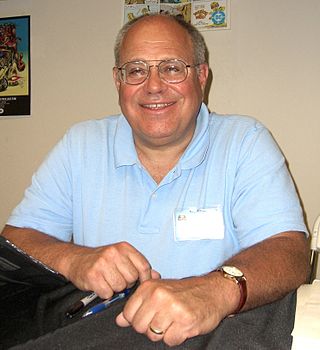
Robert "Bob" Rozakis is an American comic book writer and editor known mainly for his work in the 1970s and 1980s at DC Comics, as the writer of 'Mazing Man and in his capacity as DC's "Answer Man".
Batmania is a term coined by Billy Joe (Biljo) White in the early 1960s and the title of his influential fanzine dedicated to the DC comic book character Batman. The name is "almost certainly" a nod to the then-prominent term "Beatlemania" used to describe the impact of the Beatles in popular culture. When White first published Batmania, interest in the Batman character was at a low point; however, due to changes credited largely to DC editor Julie Schwartz, comic sales improved and the character built a wave of popularity that led to the 1966 Batman television series. White and his fanzine were credited with helping to focus the energy of the dedicated fans during this time.
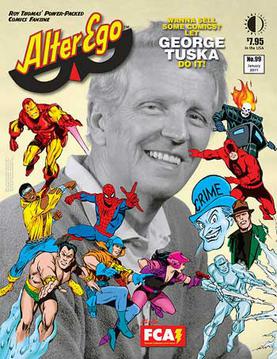
Alter Ego is an American magazine devoted to comic books and comic-book creators of the 1930s to late-1960s periods comprising what fans and historians call the Golden Age and Silver Age of Comic Books.

Superboy is a superhero that appears in American comic books published by DC Comics. The character was created by Jerry Siegel and Don Cameron and is based on the character of Superman that Siegel co-created with Joe Shuster. Superboy first appeared in the comic book More Fun Comics #101 in 1945.
William Carl Schelly was an Eisner Award-winning author who chronicled the history of comic books and comic book fandom, and wrote biographies of comic book creators, including Otto Binder, L.B. Cole, Joe Kubert, Harvey Kurtzman, John Stanley, and James Warren as well as silent film comedian Harry Langdon.

The origin of Superman and his superhuman powers have been a central narrative for Superman since his inception, with the story of the destruction of his home planet, his arrival on Earth and emergence as a superhero evolving from Jerry Siegel's original story into a broad narrative archetype over the course of Superman's literary history and as the character's scope continues to expand across comics, radio, television and film.
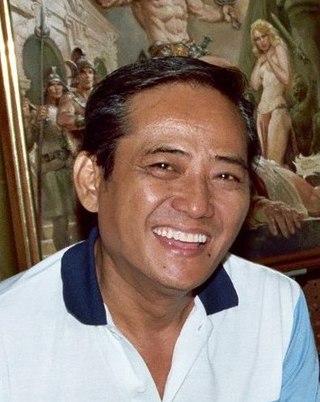
Nestor P. Redondo was a Filipino comics artist best known for his work for DC Comics, Marvel Comics, and other American publishers in the 1970s and early 1980s. In his native Philippines, he is known for co-creating the superheroine Darna.
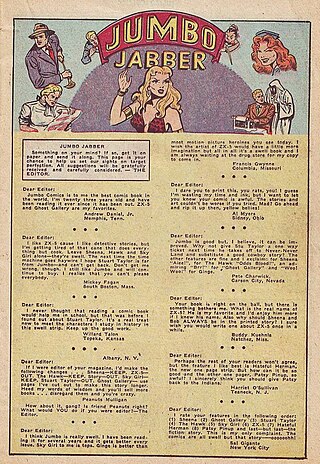
A comic book letter column is a section of an American comic book where readers' letters to the publisher appear. Comic book letter columns are also commonly referred to as letter columns, letter pages, letters of comment (LOCs), or simply letters to the editor. Letter columns appeared early on in the history of comic books themselves, and their growing prevalence — particularly beginning in the 1960s — helped create and legitimatize comics fandom. As the forum developed, the volume and tenor of letters became a reliable gauge of overall reader response to developments in the comics themselves. Letter columns remained a regular feature of most comic books until the early years of the 21st century, when they began being phased out in favor of the growing prevalence of email and Internet forums. Despite this, the 2010s saw a renaissance of comic book letter columns, and many comics titles still print them.
A letterhack is a fan who is regularly published in magazine and American comic book letter columns.
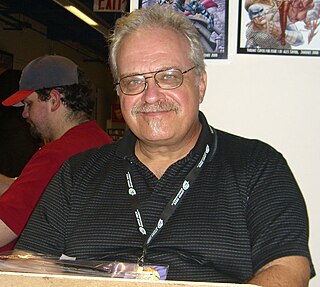
Alex Saviuk is an American comics artist primarily known for his work on the Marvel Comics character Spider-Man.

The Comic Reader (TCR) was a comics news-fanzine published from 1961 to 1984. Debuting in the pre-direct market era, TCR was the first regularly published comics industry news fanzine, and was able to secure many contacts from within the ranks of the larger publishers. As TCR increased in popularity and influence, it was able to attract professional artist to illustrate the covers. TCR also proved to be a launching pad for aspiring comic book creators, many of whom published work in the fanzine as amateurs. Contributors from the world of fandom included founding editor Jerry Bails, key editor Paul Levitz, Paul Kupperberg, Tony Isabella, Byron Preiss, Neal Pozner, Don Rosa, Carl Gafford, and Doug Hazlewood.

Limited Collectors' Edition is an American comic book series published by DC Comics from 1972 to 1978. It usually featured reprints of previously published stories but a few issues contained new material. The series was published in an oversized 10" x 14" tabloid format.
Sol Harrison was an American comic book colorist, production manager, and executive whose career spanned nearly 50 years in the industry.
John Calnan was an American comics artist best known as the co-creator of Lucius Fox with writer Len Wein.












